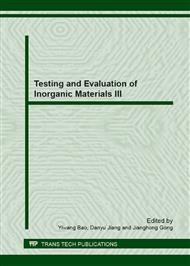p.471
p.476
p.481
p.485
p.489
p.493
p.497
p.502
p.507
The Programming of Dentistry CCS/CCM Software
Abstract:
Objective: We aimed to develop a multi-functional CCS/CCM (Computerized Color Selecting/Computer Color Matching) software so as to provide more practical colorimetric software for clinical use and further researches. Methods: This software used the 6 dental prosthetic materials and color data from 4 shade guide system which were most frequently-used in clinic currently as basic database, to program 5 functional blocks including respectively CCS/CCM system; Dental Material Chromatic Value System; Vita Information System; Transformation of Colorimeter System; and Chromatic Value Difference Analysis. These modules had the functions of information inquiry of different types of dental materials and their corresponding chromatic value, color matching, transforming, and color difference analysis. Results: The software had a convenient operation interface which could guarantee a stable performance. Containing various shade block and chromatic value, and transformation among different colors, this software analysed the color difference in the database, improved the accuracy and reliability of dental color choosing, and, to some extent, increased the color repetition rate of prosthesis. Conclusion: The software could well meet the needs of clinical dental colorimeter and choosing, increase the color repetition rate of prosthesis, and easily finish the transformation among different colors. It had more functions to adapt clinical need.
Info:
Periodical:
Pages:
502-506
Citation:
Online since:
March 2013
Authors:
Price:
Сopyright:
© 2013 Trans Tech Publications Ltd. All Rights Reserved
Share:
Citation:


